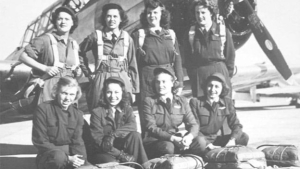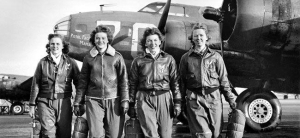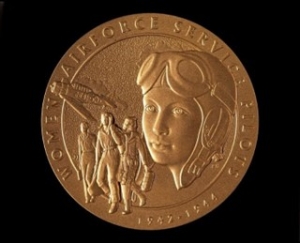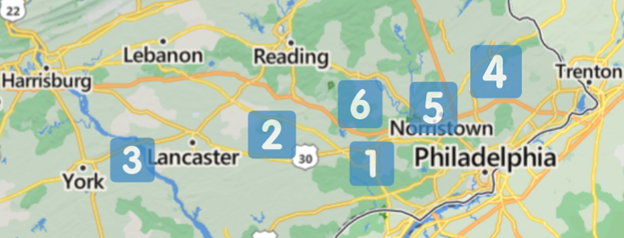Honoring the WASPS of Southeastern PA
By Mia Held, MCRP, Aviation Planner, Sustainability & Resilience Consultant, C&S Companies
Who Are the WASPs?

The Women Airforce Service Pilots or WASPs were originally established during WWII. These trailblazing female pilots were an elite unit of over 1,000 women (18 total classes of flight school trainees) who flew military aircraft for non-combat military flight duties. While the WASPs worked for the military, they were not granted military burials or provided with military benefits.

The WASPS and all those who supported them lobbied congress for years working for the recognition of the WASPs and their service through a congressional bill. They were eventually successful. President Jimmy Carter signed Public Law 95-202, Section 401 in November 1977 finally granting all WASPs who served with veteran status and the benefits entitled to them therein.

In honor of Women’s History Month, we want to highlight the WASPs buried within Southeastern PA and encourage our members to visit their burial sites to thank them for their service and excellent example of the major role women can and do play in aviation both then and now. Post your pictures and tag WTS Philadelphia so we can celebrate the WASPs together as a WTS Philadelphia chapter.
WASPs Buried within Southeastern PA

-
Ann Criswell Madden
Ann “Cris” Criswell Madden graduated from WASP flight school on October 9, 1943. During her time as a WASP she flew many different aircraft and was based out of Long Beach Army Air Base in California. Ms. Criswell Madden was posthumously awarded a Congressional Gold Medal for her service as a WASP in WWII.
Place of Burial: Cavalry Cemetery, West Conshohocken, PA
-
Virginia N. Grant
Little history is recorded about WASP, Virginia Grant. During her time as a WASP, Ms. Grant flew a number of aircraft including the BT-13, PT-17, AT-6, C-47, and PT-19 while assigned to both Romulus Army Air Base in Michigan and Eagle Pass Army Air Base in Texas.
Place of Burial: Sadsbury Friends Meeting House Graveyard, Gap, PA
-
Mary S. Reineberg
Mary S. Reineberg always wanted to be an “aviatrix.” Ms. Reineberg attended Temple University studying medicine and becoming a podiatrist. In her free time, she earned her pilot’s license and pooled her money with friends to buy their own plane. Ms. Reineberg jumped at the opportunity to become a WASP in 1944 flying the PT-17, BT-13, and AT-6 out of Marana Army Airfield in Arizona.
Place of Burial: St. Mary’s St. Patrick’s Cemetery, Violet Hill, PA
-
Joan Gough
Joan Gough is remembered as a woman fascinated by flight even from a young age, ““As I sat in the sand at the beach, I watched the seagulls, how they spread their wings and rode the air currents, and their landings on the water… I started thinking how wonderful it would be up there with them in the sky looking down on Mother Earth and feeling the freedom of flight.” Ms. Gough was a career pilot, training from age 15, attending Hofstra College for ground school, and served as a WASP pilot stationed at Goodfellow Field in Texas in 1944.
Place of Burial: Holy Sepulchre Cemetery, Cheltenham, PA
-
Patricia Disston
Little history is recorded about WASP, Patricia Disston. Ms. Disston hailed from Norwood Avenue in the Chestnut Hill neighborhood of Philadelphia. She was a member of WASP class 44-10 and served as a WASP in 1944.
Place of Burial: Church of the Redeemer Cemetery, Bryn Mawr, PA
-
Mary Holmes Howson
Mary Holmes Howson from WASP class 44-W-4 is one of 38 WASPs who perished in the course of serving their country. A flight enthusiast from a young age, Ms. Howson was a proud graduate of Smith College. As a trainee, she was killed in a mid-air collision at Avenger Field in Texas during flight exercises. This tragic accident occurred in 1944 three weeks before her expected flight school graduation. While her death was not recognized by the military in 1944, Ms. Howson was honored posthumously in 2010 at a special Air Force ceremony in Washington, DC and awarded a Congressional Gold Medal for her WWII service as a WASP.
Place of Burial: Washington Memorial Chapel Churchyard, Valley Forge, PA